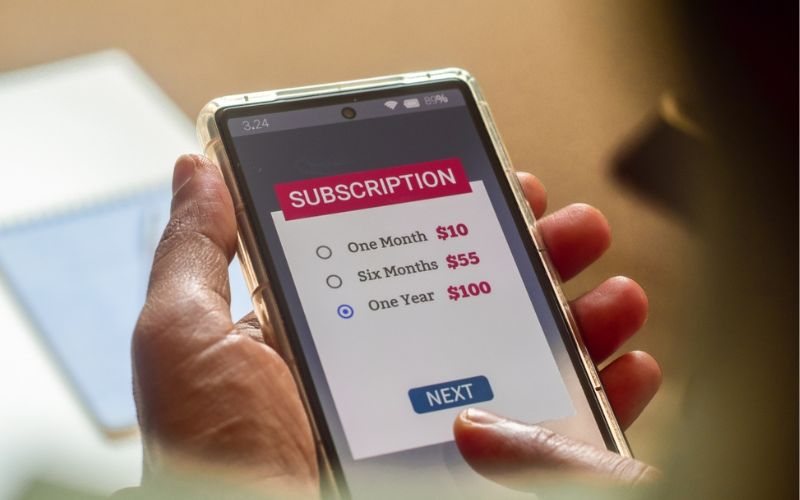Subscription models have become a dominant business model across many industries, from streaming platforms and online learning to digital services and meal kits, with many products and services that were previously sold as one-time purchases now transitioning to subscription-based models.
Increasingly, subscriptions are expanding beyond traditional digital platforms and services. As businesses strive for greater revenue predictability and customer loyalty, subscription models are proliferating across various sectors such as beauty, retail, health, food, and even household essentials. For consumers, subscriptions offer a personalised, surprising, and convenient experience. Social shopping via media platforms, including Instagram and TikTok and used as a route of discovery and brands are enabling a more embedded shopping experience.
According to Worldpay’s latest Payments Performance Report, 93% of consumers globally indicated they are likely to continue or start using subscription services. However, as consumers embrace the convenience of instant access, their expectations for seamless and friction-free experiences have risen just as quickly.
Retaining subscribers depends not only on the quality of a service but also on the effortlessness of the entire customer journey. For any subscription business, the message is clear: payments aren’t peripheral, they’re part of the product.
Payment experience has become the invisible dealbreaker
Convenience, a key motivator of subscription adoption, can be easily undermined. With subscription models renewing regularly, be it monthly, quarterly or yearly, subscribers expect the payment process to work quietly in the background. Any visible stumble in this process, from unexpected declines to confusing billing, will risk breaking the sense of trust and ease that customers seek.
Minor inconveniences, such as having to update card details or fixing a billing issue, may result in customers needing to exit the app, log in through a web browser, and hunt through layered menus. This turns a simple task into a time-consuming chore. In reality, every failed or clunky payment interaction is a break in the customer experience and could be costly to the service or product provider.
Research shows that 8.1 out of 10 digital consumers view payment experience as an important part of their overall journey. In a market where alternatives are just a click away, even minor frustrations at checkout or during renewal can prompt customers to abandon a service.
In fact, almost half of consumers have abandoned a digital transaction because of issues like too many checkout steps (45%), redirections to unfamiliar sites (42%), or the need to retry failed payments (54%). What makes this challenge harder is that customers rarely complain before leaving. Silent churn often reflects solvable problems, such as expired cards, missing preferred payment options, or a lack of transparency about subscription management.
Seamless payment experiences are key to the success of subscription models, any interruptions might not only cause immediate revenue loss but also trigger longer-term churn. Recognising this risk shifts the way subscription companies should think about customer experience. Every interaction, no matter how small, contributes either to building loyalty or to eroding it.
Subscribers today expect payment options that match their preferences, timely notifications of upcoming charges, and easy ways to manage or update their billing information. Payment excellence is no longer a technical afterthought, but an essential part of shaping customer trust.
The essentials in subscription models
Understanding what drives consumers to subscribe is crucial for any subscription-based service, and the reality is, subscribers simply want a set-and-forget model.
With 85% of consumers feeling that one-click payment is key for digital content purchases, it’s no surprise that 75% of consumers find it important that their card details are automatically updated when they receive a new card. Incorrect payment details can disrupt the seamless renewal process, leading to an unintentional loss in customer retention.
While Worldpay’s findings show that it’s important to ensure seamlessness and convenience throughout the payment journey, 96% of consumers highlight that it’s also crucial for users that they are notified ahead of time when their payments are being taken. Consumers also want to feel that they are in control of their subscriptions and have the option to easily pause, opt out or reschedule their payments.
For digital merchants offering subscription-based services, ensuring a deep understanding of what consumers value can make it easier to deliver in a way that exceeds their expectations.
Winning loyalty in a subscription-first world
Subscription models thrive in the modern business world, but they have to be implemented correctly. When billing is seamless, secure, and intuitive, customers are more likely to stay, upgrade, and advocate for the brand. But when payments are treated as a back-office afterthought, the impact extends beyond failed transactions and can erode trust.
As the subscription economy evolves, companies that see the full customer journey, from sign-up through every renewal, as a continuous experience, will lead the way. Ultimately, the most successful brands won’t just deliver great products and content, they’ll make every interaction, from sign-up, payment and renewal, feel effortless.


